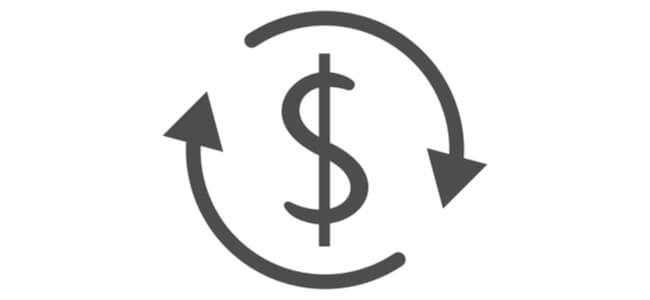What Is A Revolving Debt And Does It Really Help?

According to recent Federal Reserve data, Americans’ total revolving credit debt declined by an eye-popping 28.6% to $996 billion in May compared to the same period a year earlier. At the same time, the amount of installment loan debt increased significantly. Financial analysts point to COVID-19 as the leading cause of this turnaround.
Still, what’s the difference between the two financing types, and how does revolving credit impact your FICO score? Read on for the valuable answers.
What Does Revolving Debt Mean?
Revolving credit is a type of debt that’s not repaid in fixed monthly payments. You’re approved for a specified borrowing limit. You don’t have to exhaust the financing limit, and you’re only responsible for paying interest on the amount you’ve drawn from the total amount available. As you repay, the limit is replenished.
Your payments are calculated based on the balance outstanding. Typically, you can expect to pay a minimum monthly amount of around 2.50-3.00% of the total due balance. Examples of this financing include credit cards, personal lines of credit, and home equity lines of credit (HELOCs).
Credit cards:
- Once approved, you’ll obtain a credit limit
- You can draw up to the maximum limit
- As you pay off the balance, the limit is replenished for future charges
- Any revolving balance accrues interest
HELOC:
- You borrow up to a pre-approved limit based on the equity in your home
- Your house or property serves as collateral
- There’s a defined “drawdown” period during which you can spend the money
- During the repayment period, you pay back the funds that were drawn
A personal line of credit:
- Works like a credit card
- Borrowers are preapproved for a particular amount
- As you repay, the limit becomes available to spend
Revolving Debt Vs. Installment Debt
Debt can be revolving or non-revolving. The latter is also commonly referred to as installment debt. Auto loans, student loans, personal loans, and mortgages are all types of installment financing. In both cases, the APR offered depends on your financial history and credit score to a large extent.
Revolving debt:
- Open-ended agreements
- You borrow up to an approved limit and pay it back over time
- You can continue to make more charges and payments while the account is open
- You can pay off the balance each month (or billing cycle)
- Or you can pay the minimum due plus interest
- As you repay, the amount available to you is refreshed
- The account remains open as long as you don’t default or for a prearranged period in some cases
Installment debt:
- Loan terms such as the APR and payment schedule are fixed
- The approved amount is received upfront as a lump sum
- The amount to be repaid each month is known in advance
- Once the loan is repaid, the account is closed
- If you still need financing, you’ll need to apply for a new loan
When Is Revolving Credit A Good Idea?
These lending products can be especially useful when obtained within certain limitations. For instance:
- A replenishing line of funds provides you with immediate cash to cover emergencies
- A card is safer than carrying cash
- Your score is influenced by the types of accounts you have running
- You learn to borrow responsibly and avoid binge spending
- By maintaining low balances and paying your bills on time, this kind of arrear can improve your ability to secure favorable financing terms on other types of lending products
- If you can overcome the temptation to use the entire approved amount of funds, you can use this type of lending product to build your FICO score
When Should You Avoid It?
You might want to avoid this type of financing if:
- You’re the type of person who maxes out your cards and personal line of credit
- You have a low FICO score. Lenders aren’t likely to offer financing, and if they do, the interest rate will assuredly be higher
- You need a large amount of money
- You don’t like surprises
How Does Revolving Debt Look On A Credit Report?
Your score benefits from different account types, so you’ll want to have both revolving and non-revolving financing. However, they impact your credit report and score differently.
Installment loans don’t weigh heavily on your credit utilization ratio, no matter how much money you have borrowed. You’ll maintain a good score if you keep your account in good standing.
Your utilization ratio is the second most crucial factor in determining your rating. Experts suggest that you keep your utilization at no more than 30% of your available limit. This means keeping your replenishing debt balances low. As long as you’re careful to pay the balance in full each period, you won’t harm your rating.
Since revolving debt is open-ended, it carries a risk of harming your FICO score. For example, card arrears are one of the leading causes of bankruptcy. It’s easy to charge to the limit, pay only the minimum, fall behind with payments, suffer penalties and increasing interest rates, and then find yourself drowning in outstanding balances.
The Bottom Line
Credit cards and lines of credit are the two most common forms of revolving debt. Both give you quick access to cash in case of emergencies. Still, before signing up, you’ll want to understand the interest calculations. Will it be simple, meaning you only pay interest on what you charge, or will it be based on your average daily balance? If you pay the balance each period, this won’t be an issue. Armed with all the relevant information, it becomes easier to recognize the liability while engaging in sound financial habits.



